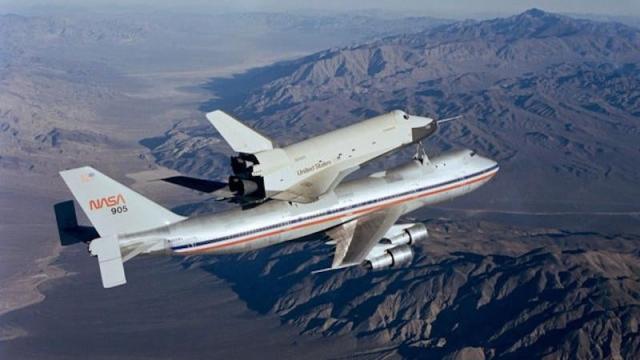Prior to the inaugural launch of the Space Shuttle Columbia in 1981, NASA conducted a series of performance tests with a prototype known as Enterprise. Named for the fictional Star Trek vessel, Enterprise provided our first glimpse of what a future spaceship might actually look like.
When I was a kid, I loved to play with my toy Enterprise Shuttle, which rested comfortably on top of its corresponding toy 747 jet airliner. NASA’s Space Shuttle had not yet launched to space (yes, I’m dating myself here), yet my imagination was already soaring, as I envisioned the black-and-white spaceplane soaring through the celestial void.
As an adult, I still hold a soft spot for Enterprise. The intrepid prototype set the stage for NASA’s a 4.5-million-pound space truck, despite it never reaching orbit.
Under construction

Construction of Enterprise began on June 4, 1974 at the Rockwell International Space Division’s Orbiter Assembly Facility in Palmdale, California. The prototype vehicle lacked many features seen in the orbital versions, such as functional engines and a heat shield. Enterprise was a gigantic glider that cruised through Earth’s atmosphere, providing NASA with a platform for running atmospheric flight tests. An elongated nose probe mounted to the nose cap (a feature not seen on orbital versions) gathered airflow data.
The first pilots
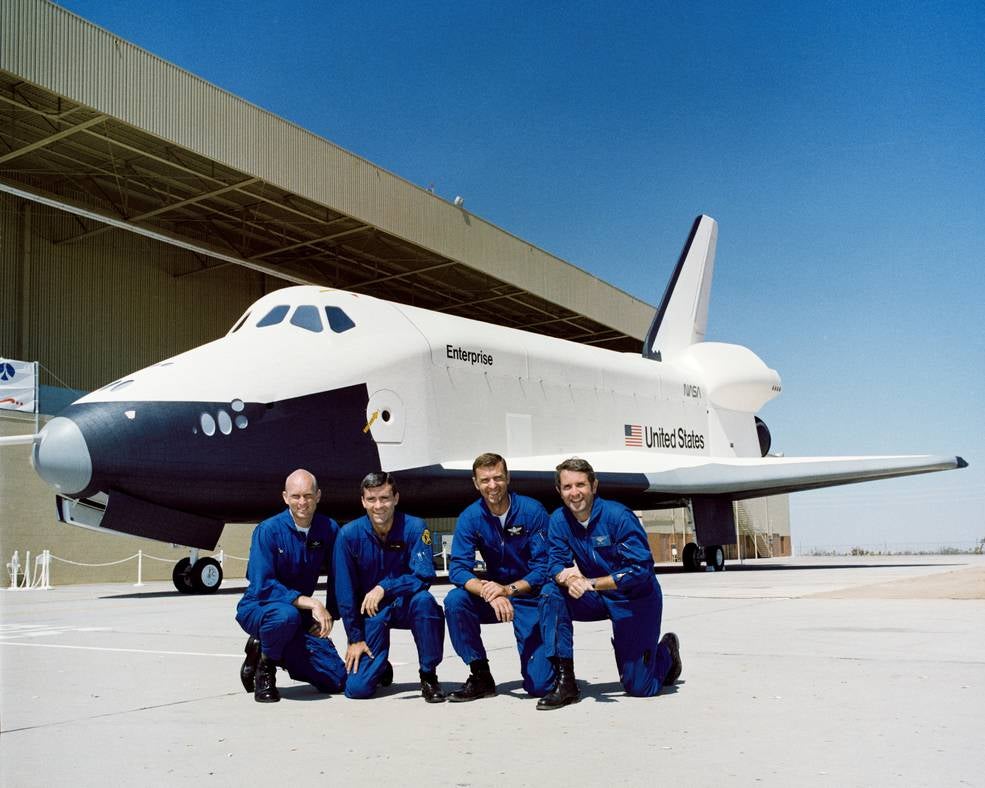
NASA pilots performed a total of five free flight glide tests, known as the Approach and Landing Tests (ALT), during a nine-month period in 1977. The space agency used two two-men crews for these tests, one consisting of Fred Haise and C. Gordon Fullerton and the second Joe Engle and Richard Truly. Haise had previously served as the Lunar Module pilot during the beleaguered Apollo 13 mission. The photo above was taken on September 17, 1976, the same day that Enterprise was shown to the public for the very first time.
To boldly go
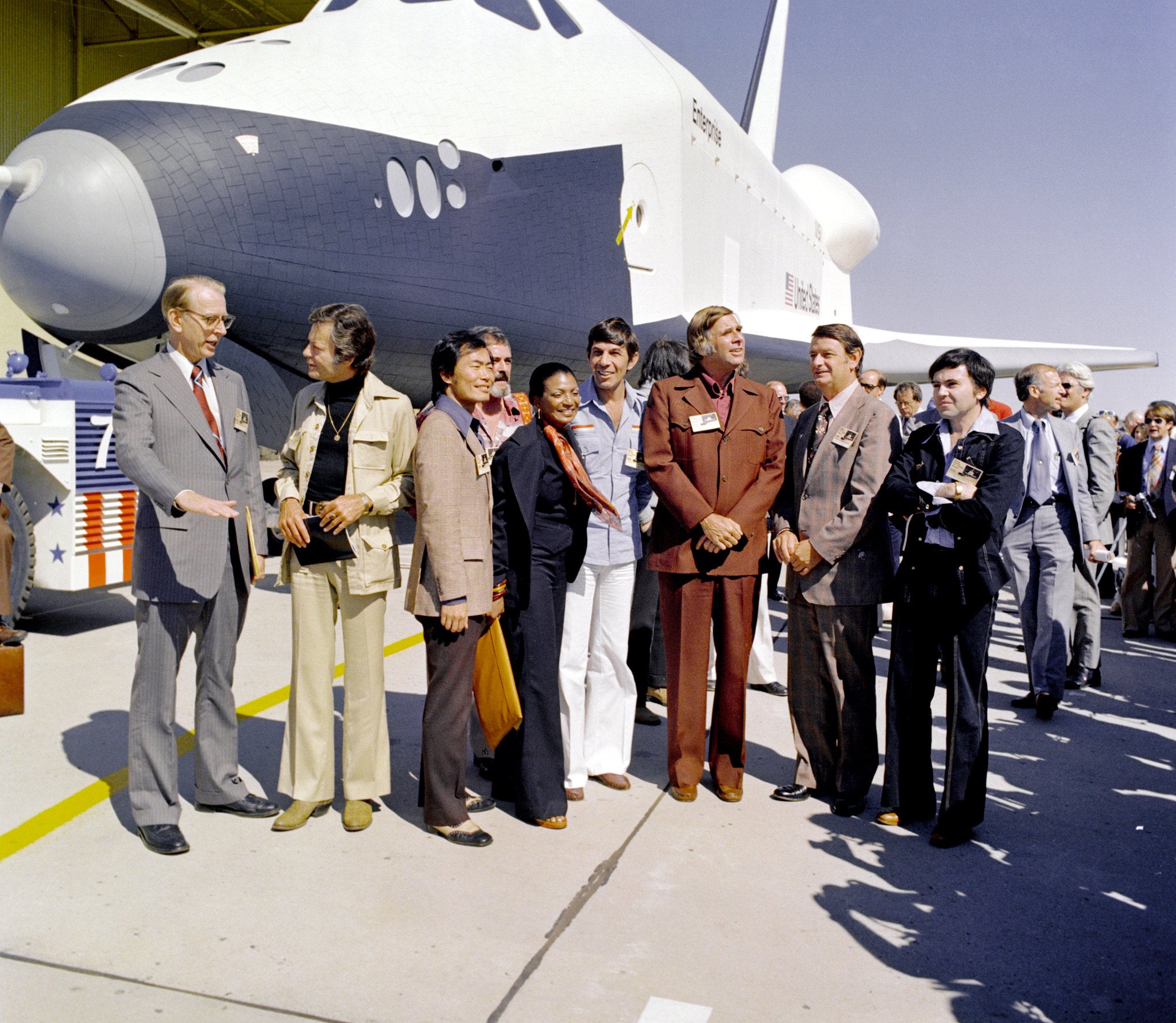
The prototype was formally designated Orbiter Vehicle 101, or OV-101, despite it never entering into Earth orbit. As for a real name, NASA’s original intention was to call it Constitution, but a passionate letter writing campaign from Star Trek fans compelled the space agency to name it Enterprise in honour of the fictional starship. The prototype’s unveiling on September 17, 1976 was attended by several of the show’s cast members, including DeForest Kelley, George Takei, James Doohan, Nichelle Nichols, Leonard Nimoy, and Walter Koenig. Star Trek founder Gene Rodenberry (seen standing beside Nimoy) was also in attendance.
Up and away

NASA used a Boeing 747 jet airliner, known as the Shuttle Carrier Aircraft (SCA), to lift Enterprise to altitudes ranging from 19,000 to 26,000 feet. A total of 13 aerial tests occurred from February to October 1977, with Enterprise staying mounted to the plane for eight of these flights (of these eight, five were performed without a crew and three with).
These modified 747s were subsequently used to transport operational Shuttles from landing sites (typically Edwards Air Force Base in California) to Kennedy Space Centre in Florida. The first Approach and Landing Test, in which the Shuttle was set free, came on August 12, 1977 (pictured) at Dryden (now Armstrong) Flight Research Centre in Southern California.
Testing Shuttle’s flight characteristics
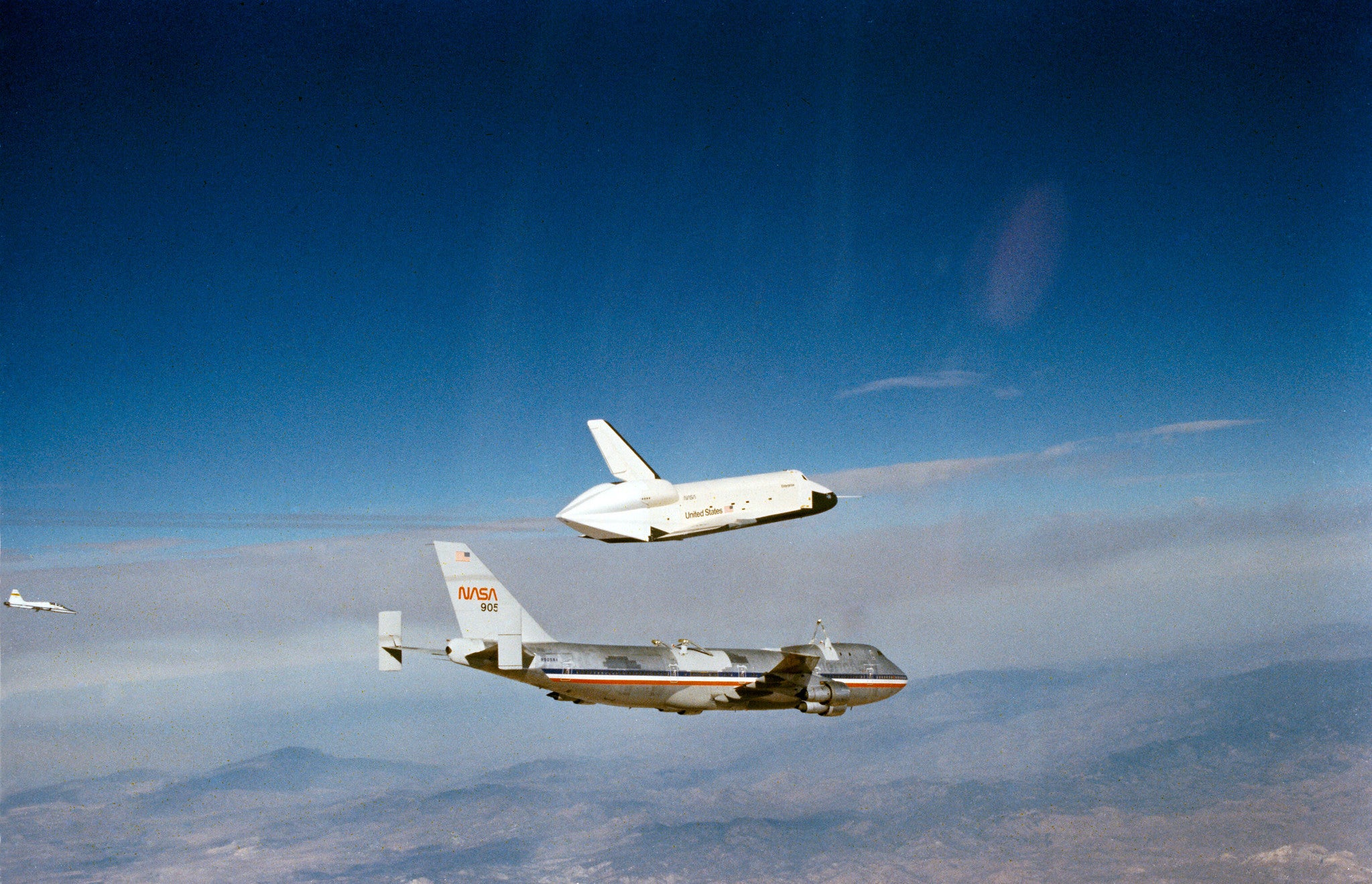
The purpose of the Approach and Landing tests were to evaluate Enterprise’s “subsonic airworthiness, integrated systems operations and pilot-guided approach and landing capability and satisfying prerequisites to automatic flight control and navigation mode,” according to NASA. The photo above was taken on September 13, 1977, when Enterprise performed its second free test flight.
The tail cone

The first three free flights had an aerodynamic tail cone attached to the rear of the prototype vehicle, which “smoothed out turbulent air flow during flight,” according to NASA. For the final two test flights, the tail cone was removed and mock engines were added to better approximate the vehicle’s shape and flight profile on its return from space.
Third flight
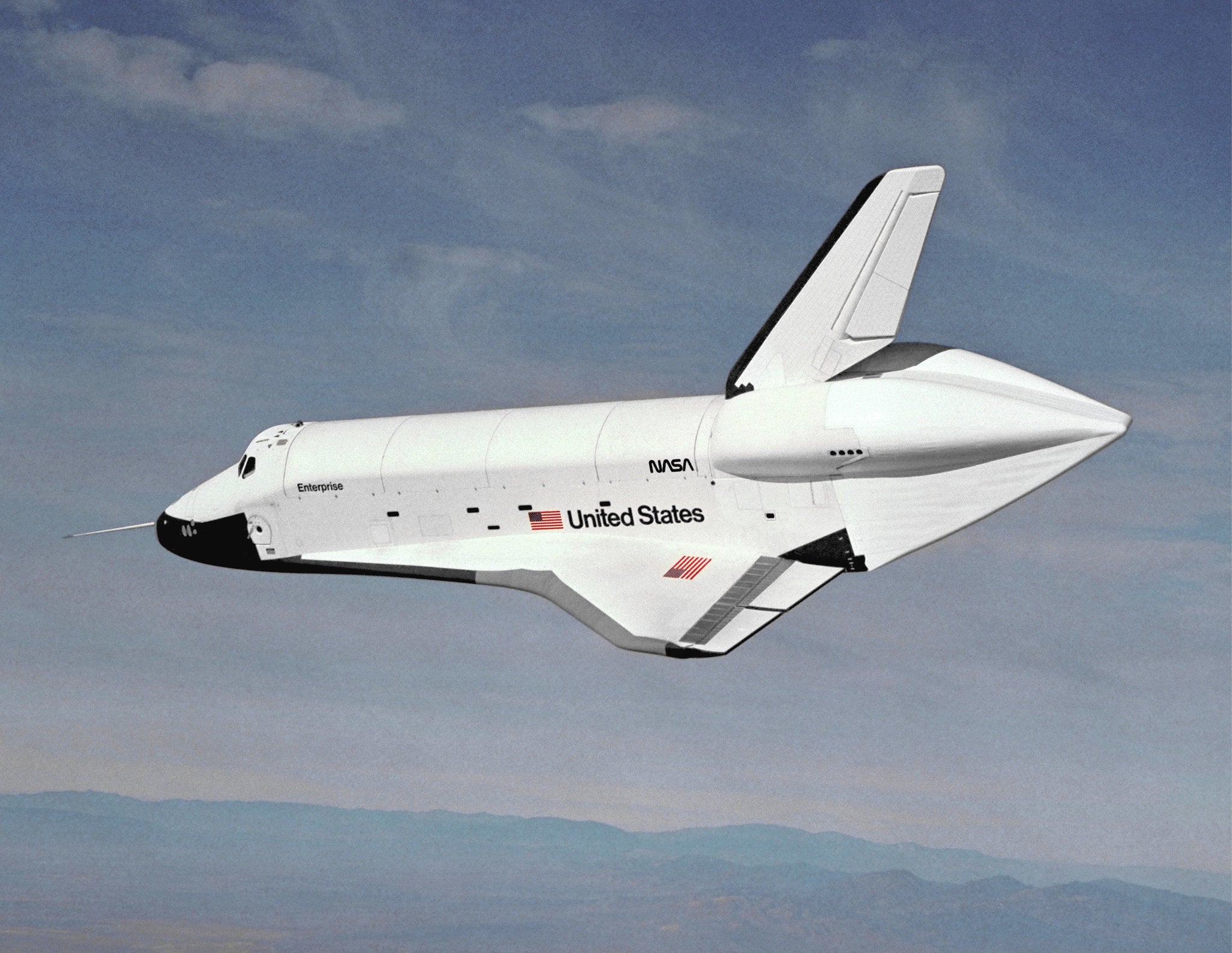
This photo shows Enterprise during its third test flight and its final flight with the tail cone attached, on September 26, 1977. The free flights were tested under different aerodynamic and weight configurations, with the astronauts in control of the craft.
The Shuttle’s Talons

A pair of Northrop T-38 Talon supersonic jets accompanied Enterprise during its test flights. The image above was taken on October 12, 1977 as the prototype vehicle headed for a landing at Dryden Flight Research Station.
Final flight
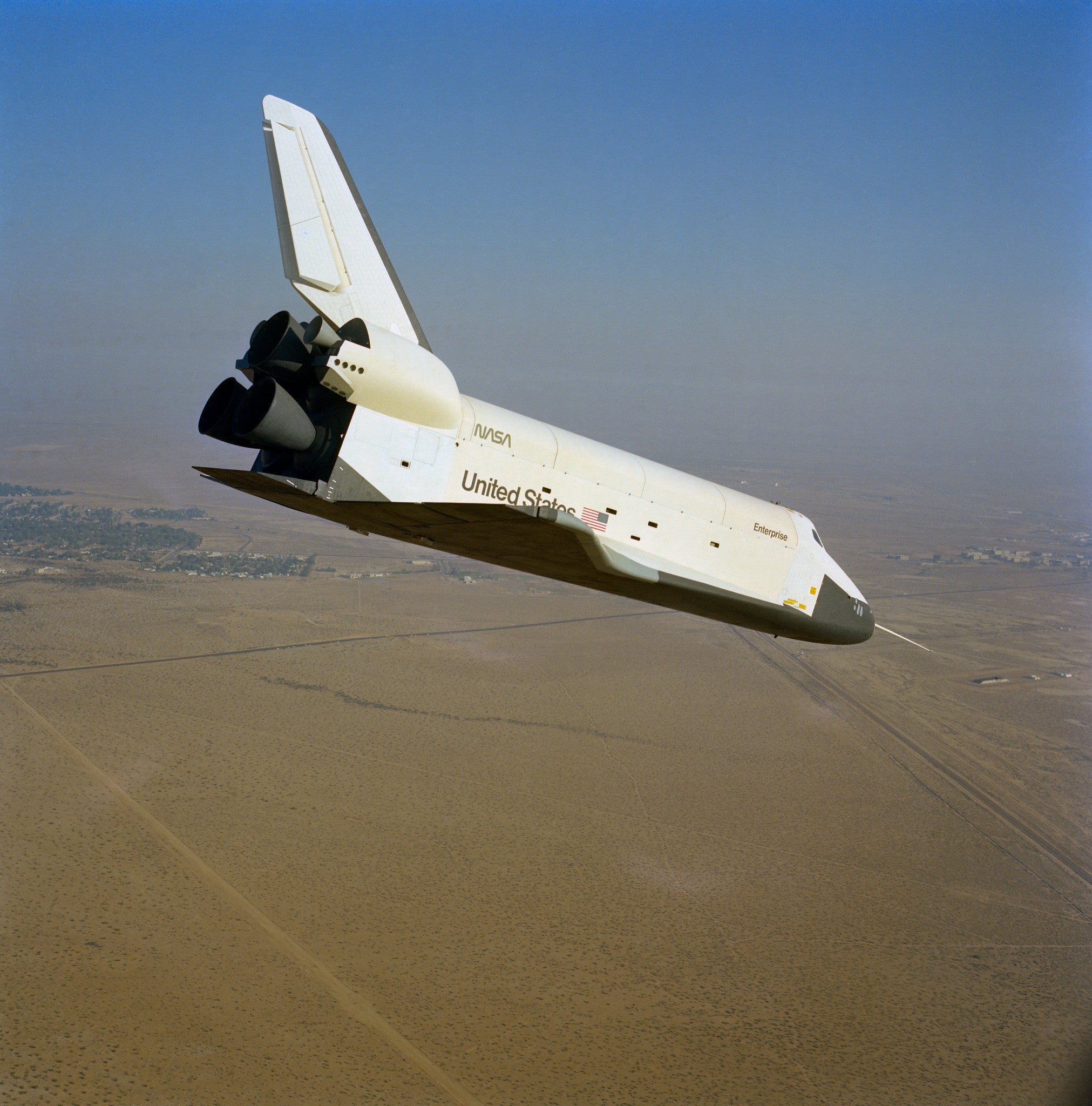
Enterprise performed its fifth and final free flight on October 26, 1977. This final test exposed an issue with the Shuttle’s flight control system that made it prone to pilot-induced oscillations, “a potentially dangerous control problem during a landing,” as NASA wrote. An ensuing investigation led to the correction of the problem prior to Columbia’s inaugural flight on November 11, 1982.
Final landing
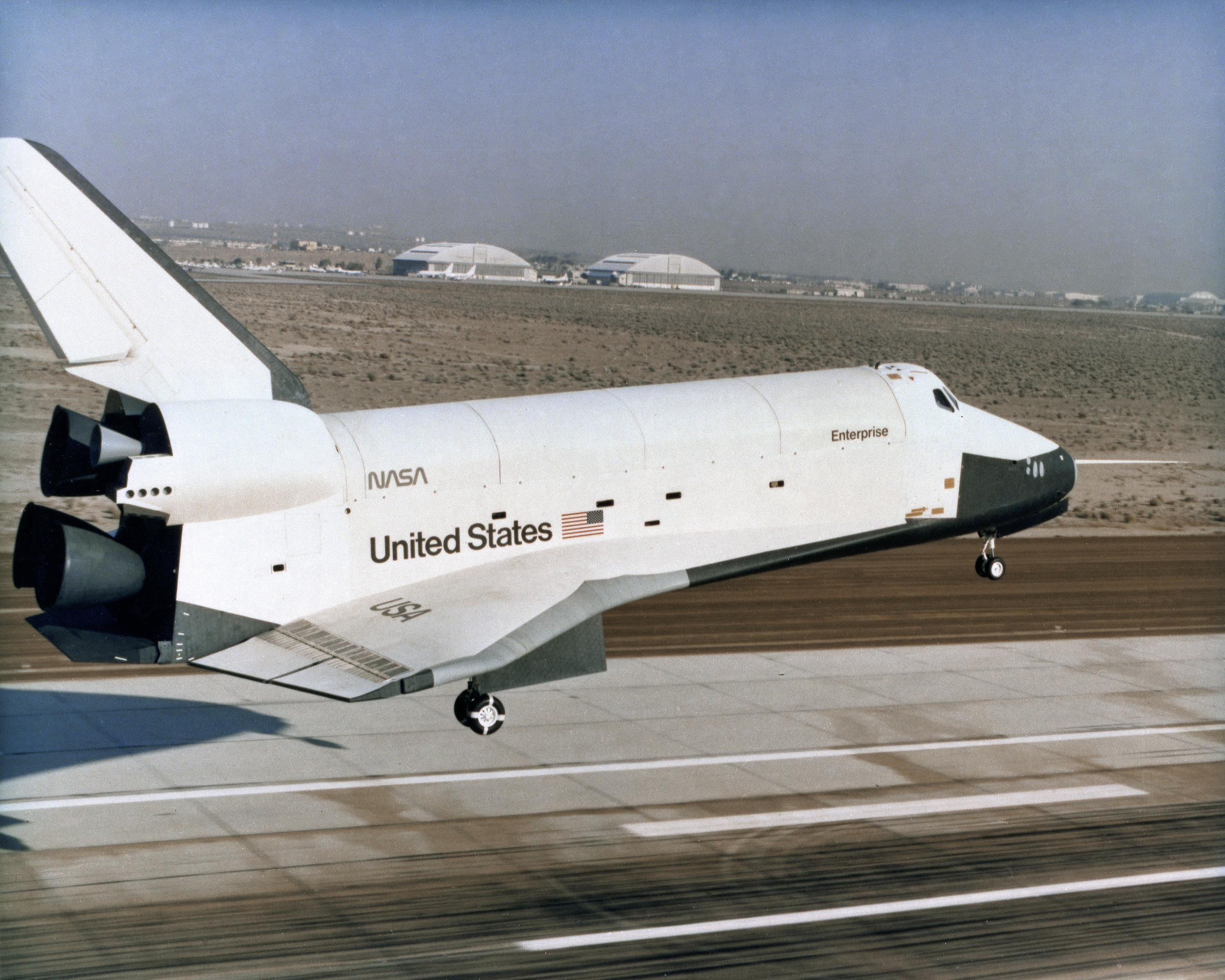
Enterprise made its final landing on the main concrete runway at Edwards Air Force Base, with Haise and Fullerton at the controls. The Shuttle was subsequently transported to other NASA facilities for ground-based testing.
On to the next set of tests
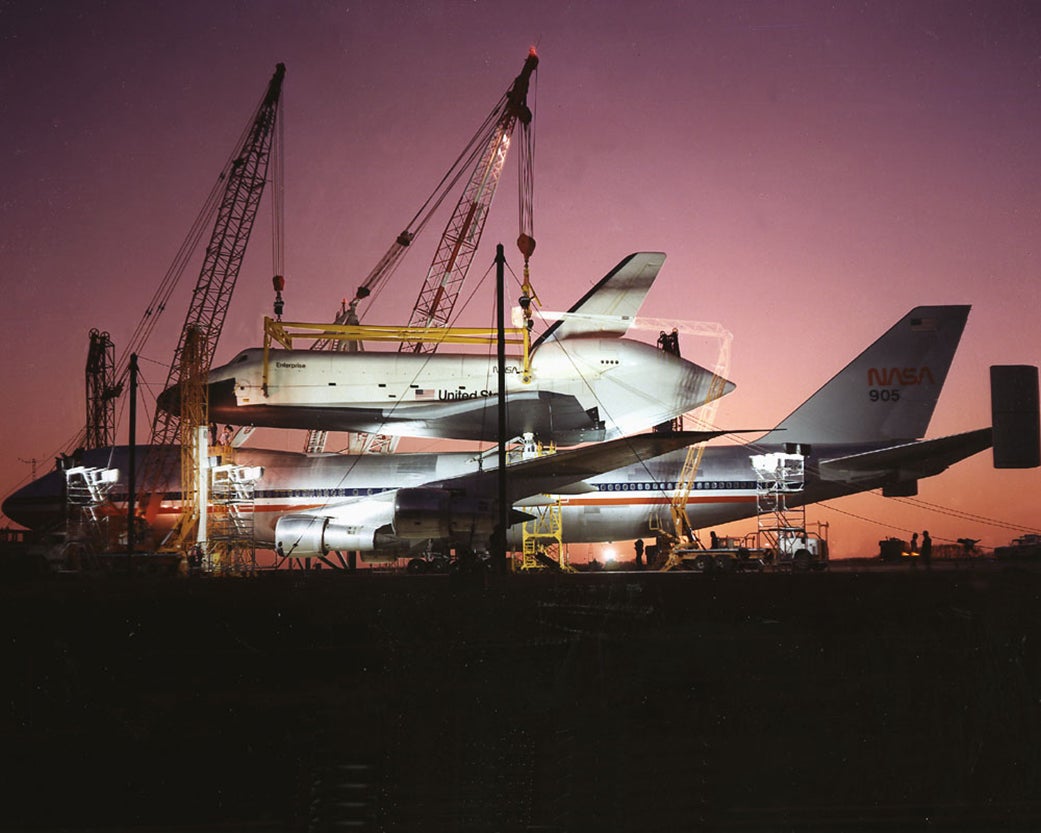
Indeed, the test flights were complete, but Enterprise still had plenty of work to do. The photo above, taken on March 18, 1978, shows the test vehicle being offloaded at Redstone Arsenal Airfield in Alabama. From there, Enterprise was towed to NASA’s Marshall Space Flight Centre for vertical ground vibration testing.
A big hoist

This stunning photo from October 1978 shows Enterprise as it’s hoisted into the Dynamic Test Stand at Marshall Space Flight Centre. The prototype underwent vertical ground vibrations tests, during which time the craft was attached to the external tank and two solid rocket boosters for the very first time.
On the test stand
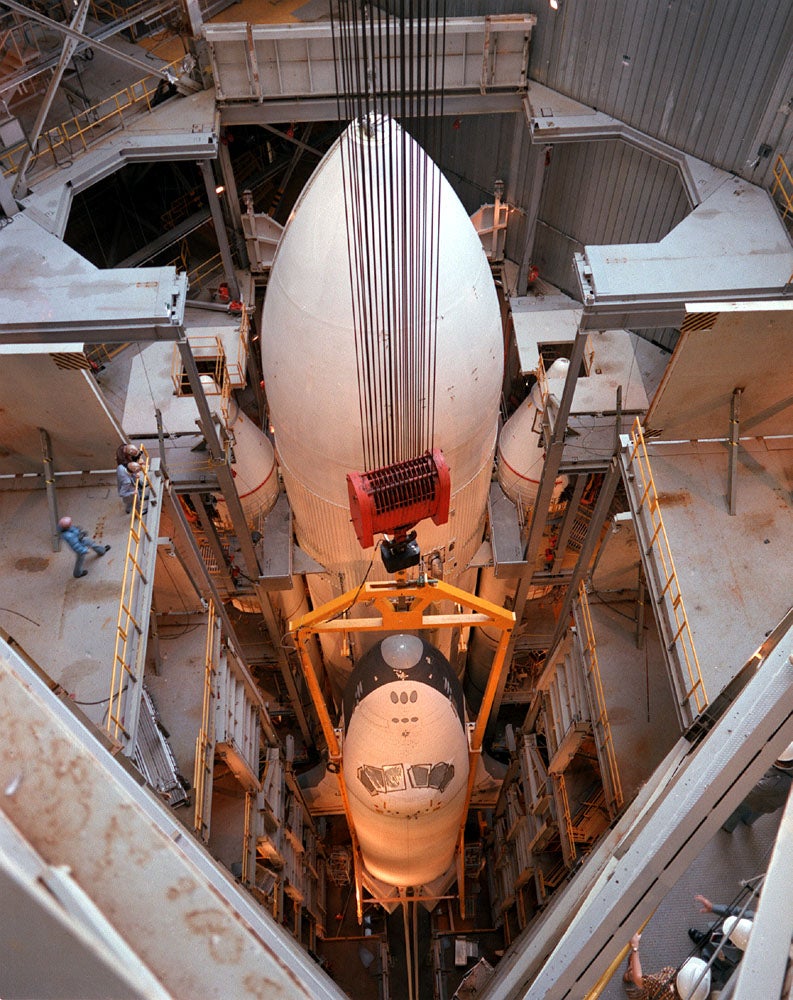
The vibration tests exposed the integrated components to simulated launch conditions and confirmed that the Space Shuttle launch configuration would perform as predicted. This photo shows Enterprise inside the test stand on October 4, 1978.
All dressed up but nowhere to go

Again, another stunning photo, this one showing the first appearance of the fully integrated Space Shuttle system in its launch configuration. The photo was taken on May 1, 1979 as Enterprise was being transported from NASA’s Vehicle Assembly Building to Launch Pad 39A at Kennedy Space Centre in Florida. The assemblage underwent several weeks of tests and adjustments as NASA inched closer to the inaugural launch of Columbia.
Sidelined but not forgotten
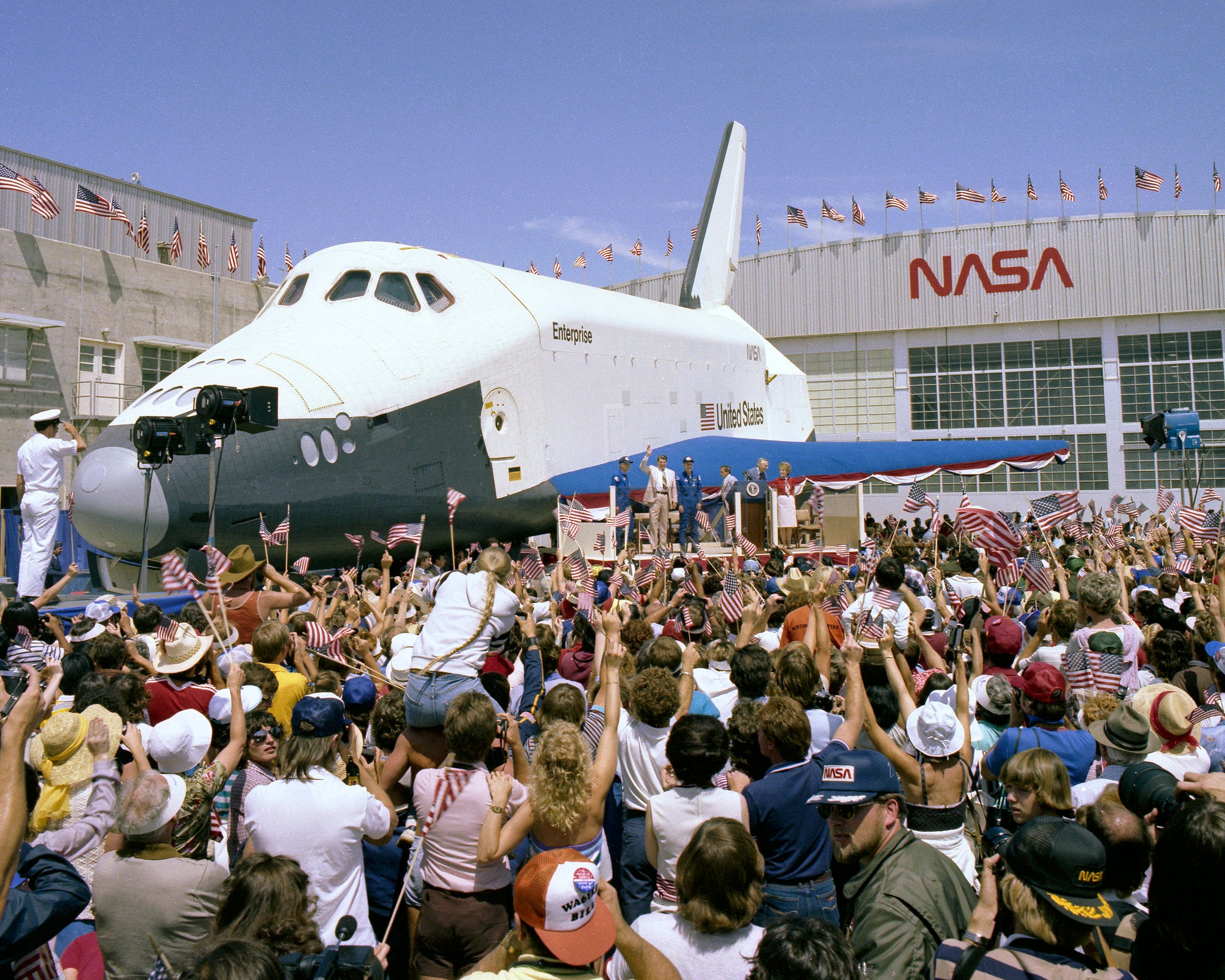
Following the fourth Columbia Space Shuttle mission to low Earth orbit, U.S. President Ronald Reagan greeted the crew, Thomas Mattingly and Henry Hertsfield, on July 4, 1982 at the Dryden Flight Research Centre, with Enterprise serving as the backdrop. NASA has originally planned to convert Enterprise into a space-worthy vehicle, but the agency decided against it as the design had changed since the prototype was first built.
The final journey
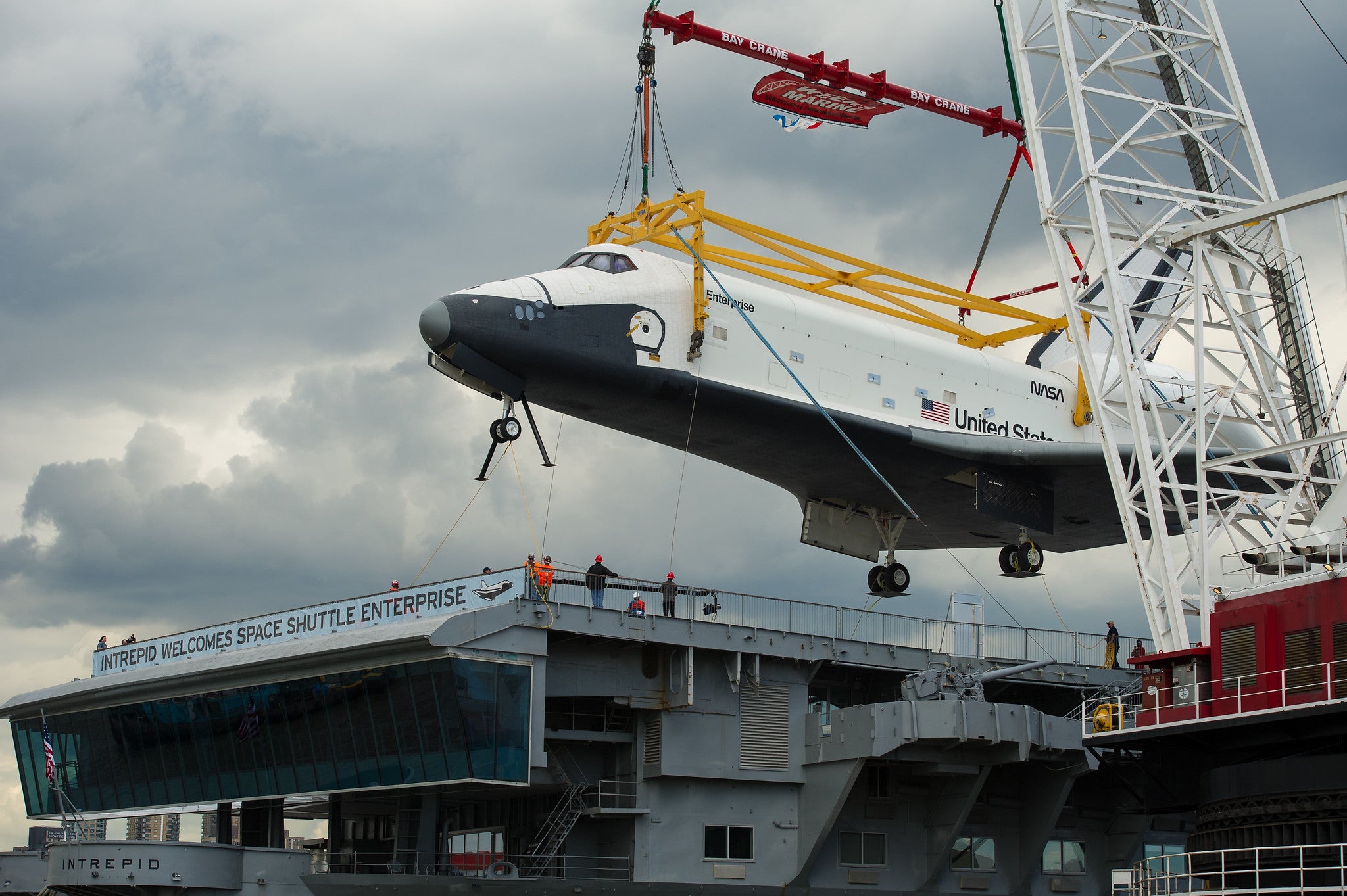
This photo from June 6, 2012 shows Enterprise being lifted off a barge in preparation for its delivery to the Intrepid Sea, Air and Space Museum in New York City, where the prototype vehicle is now on permanent display. Enterprise never reached space, but its contribution to the Space Shuttle program cannot be overstated.
